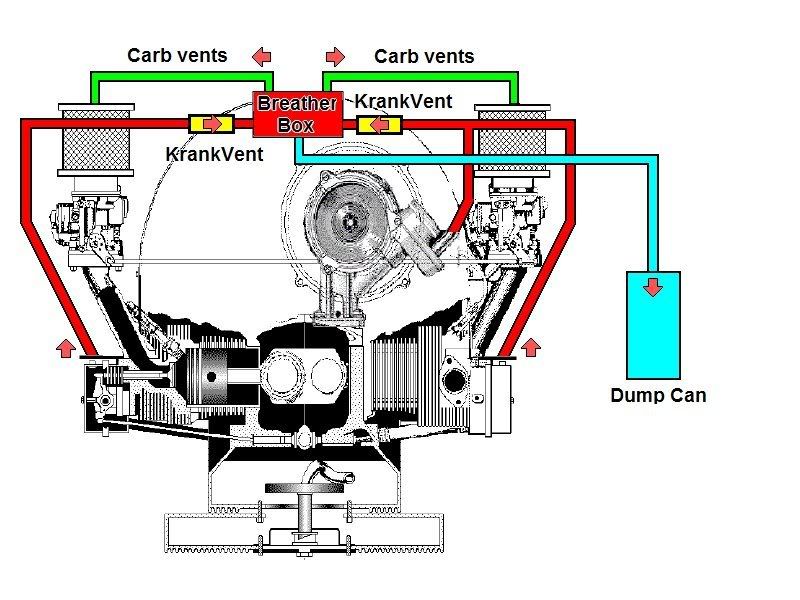OK folks, I got the alternator installed and things seemed to be working well. Ran the engine a bit in the garage trying to balance the linkage (which I can never do to my satisfaction) and had to put off a test drive due to rainy weather. While engine was running during this balancing, I got an oil, pressure idiot light on at idle speeds, which I thought odd and unusual, and there was light smoke out the back. Well, the test drive came around this PM. Before setting off, I checked the oil, and could not get a reliable reading off the dip stick, which I also thought odd. Should have put my nose a little closer. Anyway, I set off down the driveway at very modest speed and rpms and things seemed to be running smooth. Got about 1/2 ,mile from the house and went for a few more rpms and bit more speed and HOLY MOTHER OF JESUS what is all that smoke out the back?? Dense white billows. Left off the pedal, and the smoke eases off. Try again, and another smoke screen like you see in WWII documentaries. Well WTF and and a whole lot more that will not be printed here. Made a tight U turn and went slowly back to the garage. Tried to think about what was going on. Re-reading the dip stick, I think I get a reading like an inch or more above the highest mark, but it is very hard to make out because the wetness is so thin. And I know that this just cannot be. But guess what?? it is to be. I drained the "oil" and got a multitude of liquid, mostly gasoline. So obviously I have or (maybe) had a stuck open float. So there are two basic questions:
1. What is the possibility that said stuck float valve was stuck only like one time, and might now be unstuck and all is jake?
2. Can the carb tops (44IDFs) be lifted insitu to inspect/clean/refurb the floats? wrt 1., if I turn on my electric fuel pump with engine off and look down the throats, and the float valve is still stuck open, will I see the gas running out?? PS: I have a pressure gauge on the fuel system, and the pressure is ~ 3 psi.
And I have about two days to get to the bottom of this one.
And of course I am worried sick about scoring of my cylinders and harm to the bearings. any ideas about that??





